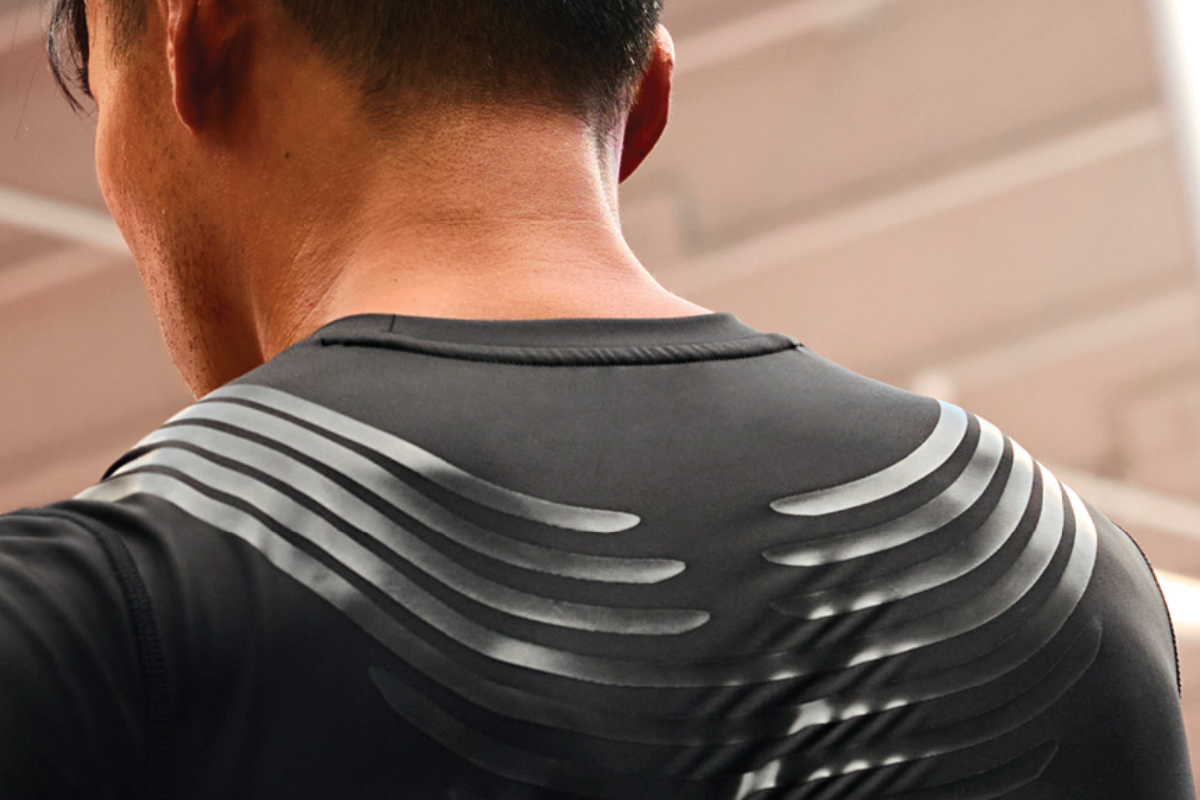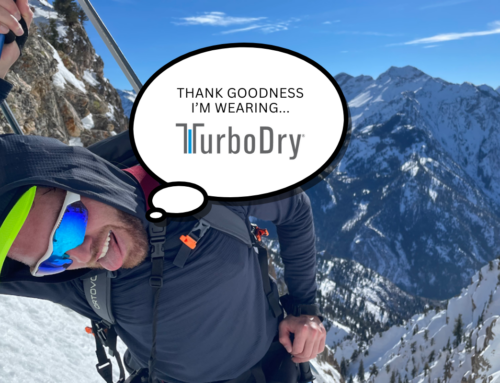5 Trends in the Running

Hard-Core Fabric Performance that’s Easy on the Earth.
The focus of material innovation for active sportswear has long been driven by developing textiles to help athletes perform like well-oiled machines, training efficiently and competing at their best. Now however, high-tech functionality also meets eco-friendly standards, giving way to a new class of fabrications that are advantageous both to the individual and the environment. Here’s a quick rundown of five key textile trends influencing the future of running apparel and footwear:
Trend #1: Strides in Performance
Rheon Labs reactivewear relies on RHEON film technology that is strategically placed in garments across major muscles, or soft tissue, adapting to movement to provide support. Director of apparel Simon Huntsman explains that the material stiffens during high-intensity movements, and softens during lower-impact motion. In running tights for example, the inherent dynamic properties help control muscle shearing (muscles moving out of plane) by responding with tension when subjected to force providing runners enhanced efficiency. When used in a sports bra application, RHEON film provides the primary support mechanism, thus reducing the need for high compression, which is often associated with discomfort.
Polartec Delta fabric combines a unique fabric construction and fiber blend to raise the bar in keeping runners cool in the heat and comfortable in cool conditions. The technical knit fabric is a blend of polyester and Tencel fibers that work in concert to take moisture off the body quickly for rapid drying. Delta fabric also features increased airflow with its distinct raised texture. “It feels like it floats on top of your skin,” states Polartec’s product development manager Aimee LaValley who runs in Delta tops year-round.
Trend #2: Natural Fibers Gain Ground
A resurgence of interest in natural fibers for active performance wear has ushered in a slew of new options – from materials using hemp, Tencel and organic cotton to cotton blended with yak fiber. Wool innovation has been off the charts, with exceptional advances in merino wool in particular. “Runners, much like golfers and hunters, often don’t think of apparel as technical equipment, but a merino wool garment is as technical as gear,” shares Jose Fernandez, founder of Global Merino, a specialist offering apparel in variety of merino weights from super-light to winter-warm, all featuring wool’s lineup of inherent performance characteristics; the crimp in the fiber allows wool fabrics to hold air and thereby retain heat, but wool fibers can also absorb almost one-third of their own weight in water, making wool fabrics excellent for wicking moisture. Wool fibers are also elastic, which means that wool fabrics retain their shape over the lifespan of a garment.
Trend #3: Lighter Footprints
Material developers struggle finding adequate eco-friendly replacements for footwear components, with glue often cited as the biggest challenge. OrthoLite recently introduced its patented Fiber-Fusion Technology that eliminates the need for glue, mechanically bonding Electrostatic Discharge (ESD) conductive copper fibers into the OrthoLite X35 base layer. The proprietary top-cover system features in OrthoLite’s new ESD Shield insole.
Bio-based hot melt adhesive is another eco-friendly glue emerging. This type of adhesive uses renewable raw materials such as corn, potatoes, tapioca, and certain vegetable oils as a percentage of the adhesive recipe, explains Rob Falken, VP of Innovation for OrthoLite, adding, “It is still early days in the mass commercialization of a synthetic eco-friendly glue that can withstand the rigors of footwear manufacturing such as water resistance, exposure to high heat, and long-term use coupled with bending and flexing.”
CovationBio has introduced a unique midsole material that highlights Susterra, a regeneratively grown, corn-based product. “It’s the first example we’re aware of where this percentage of bio-based content (55 percent) is used in the midsole of an athletic shoe,” said John Hurban, VP global marketing/sales, CovationBIO PDO. “We believe runners and fitness enthusiasts will benefit from increased high-performance shoe flexibility, comfort and durability.”
Trend #4: Function x Fashion
Two staples of the running wardrobe have never looked so good. JRC Reflex makes high-end, high-performance reflective technology. The intensity and color range achieved, via the company’s innovative approach to function and fashion, elevates reflective from a standard issue safety product to statement wear.
Dudley Stephens, a Connecticut-based, female-founded company, sells a repertoire of Polartec fleece fabrics in its clothing collection, including recycled fleece, that stylishly level up post-run recovery wear. A standout for fleece flair is the Palmer Puff sleeve turtleneck.
Trend #5: Naturally Sustainable
Prioritizing recycled content fabrics, removing harmful substances from textile production and re-thinking recycling of textile waste is top of mind as the textile industry works collectively to meet 2030 sustainability goals and prepare for textile recycling legislation coming down the pike.
The LYCRA Company’s newest offering in its Coolmax portfolio is Recycled Coolmax. The product is made with a polyester specialty yarn made from pre-consumer textile waste. “Recycled Coolmax offers the same moisture management performance with a strong sustainability story,” says Melissa McGlynn, The Lycra Company’s senior strategic account manager.
Ascend Performance Materials has just come out with a new certified bio-based nylon in its odor-fighting offering. Called Acteev FREE, the technology offers permanent anti-microbial protection built into fibers and yarns for apparel.
NexTex Innovations debuted in Saucony’s Pinnacle Collection with t-shirts, for men and women, made with a polyester knit front panel powered by NexTex’s TurboDry technology. The fabric technology utilizes biomimicry – an approach that takes inspiration from nature’s solutions – to create yarns that move sweat to the outside of the garment lickety-split for a remarkably quick dry time, keeping runners more comfortable.




